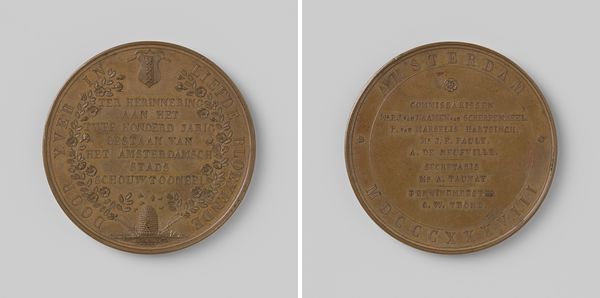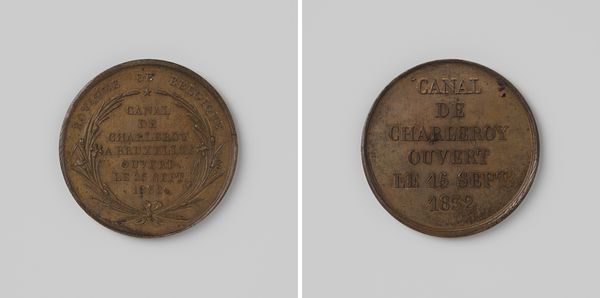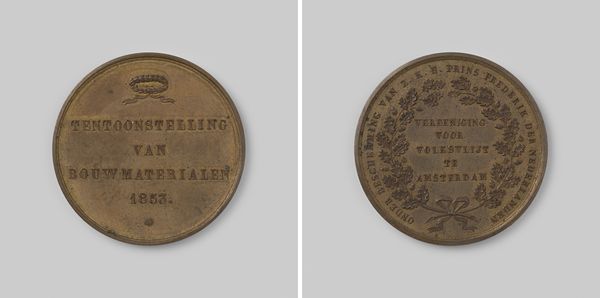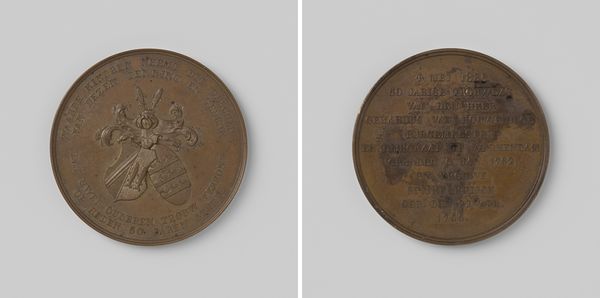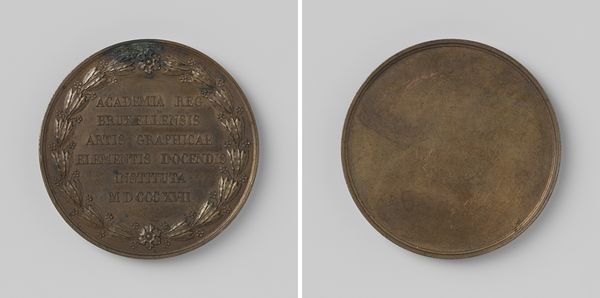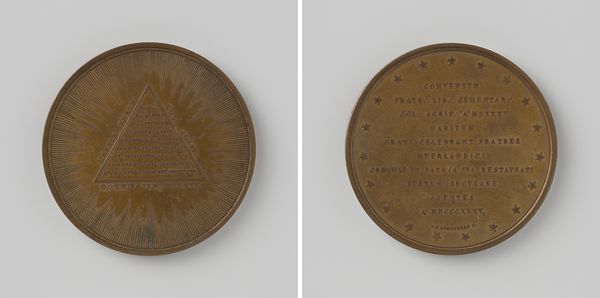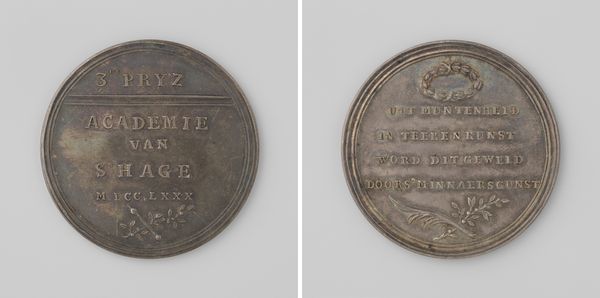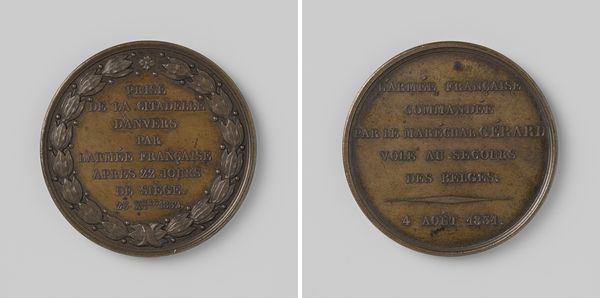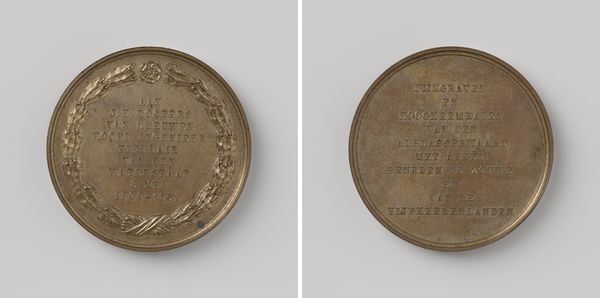
Vijftigjarig huwelijk van Willem Adriaan de Jonge, heer van Campensnieuwland, en Cornelia Petronella Mogge-Pous 1834
0:00
0:00
print, metal, engraving
#
portrait
# print
#
metal
#
romanticism
#
engraving
Dimensions: diameter 4.2 cm, weight 29.90 gr
Copyright: Rijks Museum: Open Domain
Curator: Looking at this intriguing piece, entitled "Vijftigjarig huwelijk van Willem Adriaan de Jonge, heer van Campensnieuwland, en Cornelia Petronella Mogge-Pous," created in 1834, I’m immediately drawn to how it memorializes a specific social dynamic of the time. Editor: The materiality speaks to me. It’s an engraving on metal – likely bronze or copper, given the color. It has that feeling of commemorative objects from the period; a sort of weighted preciousness meant to last and be circulated. Curator: Exactly. This medal celebrates the fiftieth wedding anniversary of Willem Adriaan de Jonge and Cornelia Petronella Mogge-Pous, portraying a narrative about marriage and societal expectations of enduring commitment. What does the work tell us about constructions of long-term partnership, class and legacy? Editor: The means of production interest me. Consider the engraving: a laborious, precise technique used to mark a metal object with permanence. This mirrors, in a way, the idealized permanence of marriage itself at that time, not just on this object, but considering the larger social structures and their production too. Curator: I appreciate how you draw that connection between material process and social context. It invites us to unpack power dynamics at play during the Romanticism period and the patriarchal values attached to such commemorative events, wouldn’t you agree? Editor: Absolutely. Furthermore, the imagery itself - the clasped hands representing unity and torches representing the anniversary date. These elements become the product of artistic labor meant for public consumption, reinforcing certain ideals regarding the sanctity of marriage, don't they? Curator: Precisely, that's what brings depth to its value. It not only marked a couple's personal milestone but functioned as a tool perpetuating certain societal standards. Editor: Indeed. By observing this material object, this metal and engraving, we confront questions of the making, not just of art but of ideology. I would say its endurance is valuable when considering production in general. Curator: Reflecting upon our dialogue, it is very apparent that there is so much to discover between this medal’s surfaces. Editor: I would add that what this little item has taught us helps reflect how even the seemingly small artefacts and labor in the history of production can tell a huge story.
Comments
No comments
Be the first to comment and join the conversation on the ultimate creative platform.
